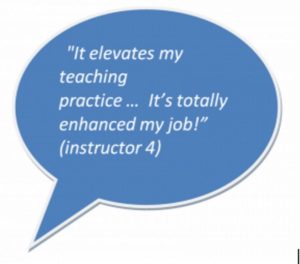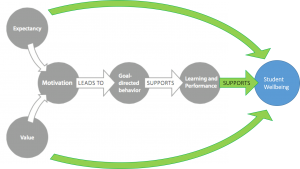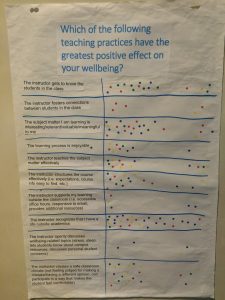The majority of students indicated that feeling connected to the instructor is important to their wellbeing. One student mentioned that “just [having] that personal connection or like to actually speak to the professor one on one promotes my wellbeing more” (Science student). In addition to creating a sense of belonging, having a personal connection with the instructor supports student wellbeing in other ways. Feeling connected to the instructor enhances student’s perception that the instructor cares about student learning and wellbeing. This may enhance student motivation to succeed in the class, and increase the likelihood that students will seek additional support when required. Being friendly will help to foster the instructor-student relationship.
Students have identified a number of ways that instructors may foster student-instructor relationships in the classroom. As one student indicated, “It’s fine if [instructors] have office hours/email availability, but if they aren’t approachable, it makes it harder to use these resources.” (Student, 2016 UES). Learning and using student names seems to be a particularly powerful way of fostering a connection with the students as well. Addressing students by name “…shows that [the professor] is invested in the class and the students [because] they’re actually willing to make a connection” (Arts student). Using student’s names also makes it easier for the instructors to start conversations in the classroom, which in turn makes the class more interesting and enjoyable for the students. Participants recognized that small class sizes make it easier for instructors to learn student names. However, it appears that even when large class sizes preclude instructors from learning the names of all students, the effort to do so is noticed and appreciated.
From both our surveys and in the focus groups, students indicated that it is easier to feel connected to their instructor when the instructor is friendly and approachable. These traits also make it easier for the instructor to support the whole student and for the instructor to foster a safe classroom environment.
Here are some Teaching Practices that Promote Instructor-Student relationship
- Learning and using student names
- Having short, informal conversations with students
- Encouraging students to attend office hours
- Introducing themselves
- Displaying their passion for the subject
- Sharing personal anecdotes
- Smiling
- Having an easygoing attitude
- Using humour as appropriate
- Allowing students to call the instructor by his/her first name
Now, I am sure you would like to talk about your opinions on the above teaching practices and how they may relate to your teaching. What are your thoughts on learning all your students’ names? We would like to create a dialogue around how we, as instructors, can foster student-instructor relationships. Feel free to share your thoughts in the comment section below!






